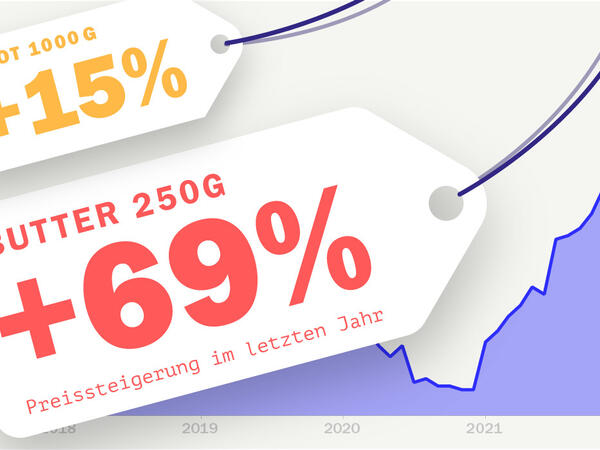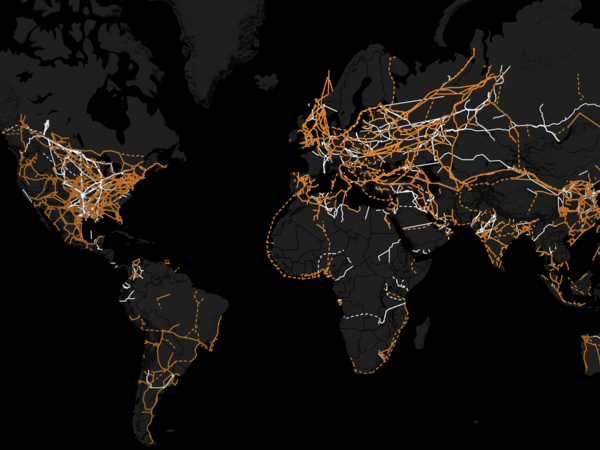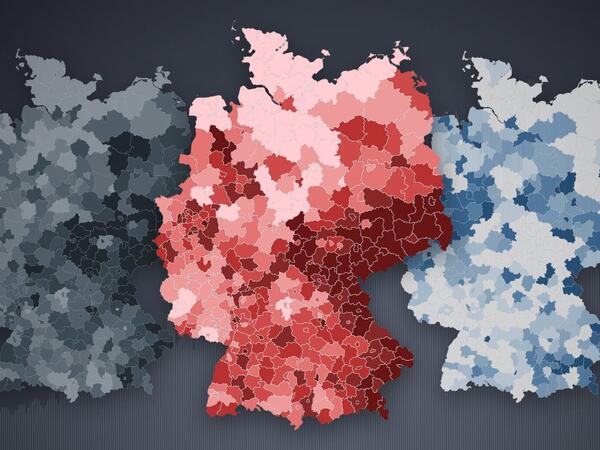Cigarettes, Chocolate, Fastfood:
Germany exports most food to these countries

A few weeks ago, the World Trade Organisation said that it expects world trade to lose momentum in the second half of 2022 and to remain subdued in 2023. Multiple shocks – like the on-going Ukrainian war, the mounting energy crisis and the after-effects of Covid19 pandemic have all induced trade uncertainty.
Where within this haze does Germany stand with its export dependencies on the world? We assess the FAO trade data over the past decade (2011 to 2020) to provide a breakdown of Germany’s top food commodity exports and how they have evolved.
Only five products brought Germany 25 percent of its food export revenue
In 2020, Germany exported 350 different food products to 186 countries, earning 79.24 billion USD. This is quite a stable figure. This revenue from exports has averaged to 78.48 billion yearly, between 2011 and 2020. Germany’s top export product category for 2020 were products made from pigs (6.36 billion USD). This was followed by ‘food preparations’. These include products like soups, broths, ketchup, sauces, seasonings, vinegar, yeast, baking powders, stuffed pasta, couscous and protein concentrates.

This tendency is very stable over the last decade. The second-most important export product over the last decade were ‘Chocolate products‘ with an average of 4.5 billion USD per year. Third came ‘cheese from whole cow milk’ (4.2 billion USD). Next on the list were Cigarettes (3.1 billion USD) and Pastry three billion US dollar. The revenue is also skewed towards a handful of these exports. The five products formed about 25 percent of Germany’s food export revenue over the decade. In fact, over half of the total revenue came from only 20 exported products. German food industry seems to be highly standardized.
Like imports, German exports cater the European Union
As we explained in a previous article, Germany’s international trade ought to be looked at through the lens of its integration within the European Union (EU). Over the decade, ten of the top eleven countries that absorbed German food exports were EU members. The eleventh is the UK. Together, these eleven countries accounted for 68 percent of Germany’s export revenue. Germany earned around 80 percent of its revenue from only exporting to EU countries, with the top three being The Netherlands, France and Italy.
Germany’s integration and dependence on the EU is further supported when looked at Europe’s food exports to the rest of the world. In 2020, 32 percent of them only went to two countries: The US and mainland China. 21 countries together formed 70 percent of Europe’s export share.
In 2020, Germany exported a total of 79.24 billion USD worth food products. Of this, Germany only exported 13.36 billion USD (16.86%) directly to countries outside Europe. The rest was traded internally. Europe’s food and agricultural exports outside its borders amounted to only 170 billion USD. Compare this with exports made by European countries to each other internally: 476.29 billion USD. This should put in perspective how most of Germany’s and EU countries’ exports cater to each other’s needs on the same continent.
When put in context with Germany’s imports, it shows clearly that countries within the EU (or Europe at large) are only dependent on each other for their trade and have limited dependencies outside the region as far as food commodities are concerned. And even for the goods that are exported from countries outside of Europe it’s just a very limited amount of countries that make up most imports.
The Netherlands and Germany
Within the EU, there is again nothing at par with the relations that the Netherlands and Germany enjoy. The Netherlands are Germany’s largest food export partner with an average export of 10.8 billion annually. This accounts for 13.81 percent of all of Germany’s exports. Germany exported 331 different products to the Netherlands over the course of ten years. The top five products include chickens, cheese from cow milk, food preparations, rapeseed oil, and “crude organic material” (all other crude food items that have not been classified elsewhere in FAO’s categories).
These five products form about 20 percent of all exports to the Netherlands. Much like for imports, Germany looks at the Netherlands as a gateway to the world. While some products are consumed in Netherlands, many are processed to be re-exported to the world.
Germany and the on-going Ukrainian war
International trade often remains sensitive to regional stability, so is the case with Germany’s exports to Ukraine. Ukraine accounted for 0.51 percent (4 billion USD) of German exports over the decade. Half of these exports were made up of nine products: coffee extracts, food preparations, unmanufactured tobacco, rape or colza seed, ethyl alcohol, chickens, crude organic material, chocolate products, coffee (decaf or roasted). The largest share, held by coffee extracts has been consistently reducing from 18.89 percent in 2011 to 9.17 percent in 2020.
After the annexation of Crimea in 2014, German food exports to Ukraine dropped by 38.84 percent in 2015 compared to 2014. Exports trade in 2020 continued to remain 7.7 percent below the 2014 levels. The exports were highest in 2013 at 0.56 billion USD.
The on-going war brough a further reduction in German exports to Ukraine. For instance, Germany’s exports to Ukraine of coffee, tea, mate dipped to 354 thousand USD in March 2022 compared to 1705 thousand USD in March 2021. Chocolate and cocoa products dipped to 39.8 thousand USD in March 2022 from 2176 thousand USD in March 2021. While it’s impact to German revenue perhaps remains limited due to its low share overall on the brighter side the export has steadily picked up over the last months.
While the Ukrainian war is evidently troubling German citizens, with rising fuel and energy costs, it may bring more challenges for Germany in the international food market. Conflicts have the potential of changing the course of trade in certain products. This has already been the case with Germany’s pig exports to Russia since the Crimean annexation. Afterwards, Russia turned from a net buyer to a competitor in the international pig market.
Pig meat (boneless, fresh or chilled) brings Germany a good amount of revenue. It brought an average of 2.39 USD billion yearly between 2011 and 2020. This meat has formed 3.13 percent of all the food exports over the decade being the seventh most important food export commodity. In fact, Russia was the top buyer in 2012 (worth 0.29 USD billion), and only one place behind Poland in 2013. In 2014 however, Russia imposed an import ban on food from western nations. Consequently, Germany’s pig exports to Russia dropped to zero.
The same happened with Belarus 2015 onwards and continued to be the case till 2020. This ban forced Russia to develop its own pig industry and has now emerged as a notable producer of pork with estimated exports of USD 300 million in 2020. While it remains considerable behind Germany’s exports, its emergence has certainly diverted some revenue away from Germany, and may continue to do so.
The case of German cigarette exports
A commodity that has seen a sharp decline in exports is German cigarettes. The scale is still considerably large: about 30 billion USD over the decade. In fact. Germany has been amongst the largest exporter of cigarettes. It houses manufacturing facilities for Philip Morris International, British American Tobacco and Imperial Brands.
German cigarette export has gone down from 3.9 billion USD to 1.3 billion USD over the decade. This change is a mixed response to domestic tax regulations on cigarettes and e-cigarettes but also EU legislation that added barriers for German manufactures. For instance, the end of EU tobacco subsidies caused farmers to reduce tobacco cultivation, reducing the land use from 2620 hectares in 2011 to 1500 hectares in 2020.
There is also growing awareness and concern amongst people towards the health risks of smoking. Despite these efforts, Germany didn’t perform very well on international standards that track change in consumption of tobacco until recently. In 2019, a report of the Association of European Cancer Leagues noted: “No new tobacco control policies introduced since 2010 except for the transposition of the 2014 EU Tobacco Products Directive and the ratification of the WHO FCTC Illicit Trade Protocol.
Germany is the only EU country which still allows tobacco advertising on billboards. There are initiatives to ban billboard tobacco advertising, but still with long transition periods.” This changed finally in January 2022 when outdoor advertising of tobacco products was limited.
Is the Euro-centrism of Germanys food exports a problem?
The Euro-centrism of Germany’s food exports is evident but it does not necessarily imply a ‘good’ or ‘bad’ news. Germany remains only limitedly affected on its food trade despite the war in Ukraine simply because Germany does not have major import or export dependencies on Ukraine or Russia. This is of course except for fodder which Germany does depend on the two and has brought some trouble to German farmers.
Moreso, to German cattle and pig farmers who are having to deal with rising fodder prices and the fear that consumers might simply shift to importing meat from countries abroad and cut German revenues. It will clearly be a problem should Russia start filling in the gaps in German pig markets but that remains to be seen.
Overall, German interests instead are highly dependent towards port nations like Italy and Netherlands, and neighbours like France, Austria, the UK and Poland. As long as Germany’s exports find enough buyers within these handful, the country will not have much to worry. The best it could do is further diversify gaps in its animal fodder chain that the war has brought to the forefront. Or to reduce its meat consumption.






